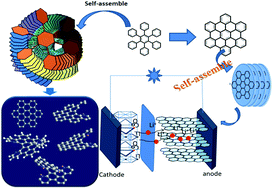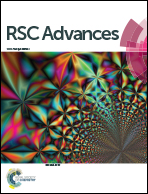Nitrogen doped small molecular structures of nano-graphene for high-performance anodes suitable for lithium ion storage†
Abstract
N-doped nano-graphene derivatives were prepared by a bottom-up organic synthesis method. Through d-spacing modification and dynamic self-assembly of the structures of these molecules, ideal lithium ion-transfer aggregation formed between each monolayer. Rapid ion/electron transfer and maintenance of the structural integrity during repeated ion insertion/extraction occurred due to the lack of a covalent interaction force among the assembled structures. The doping level, i.e., number of N atoms, had a significant influence on the molecular self-assembled structures through hierarchical self-assembly. As the N concentration increased, the d-space between the nanosheets increased from 3.4 to 4.3. The capacity of the nano-graphene increased greatly from N-doping nano-graphene (NG-N4) to 1800 mA h g−1, indicating that the capacity is related to the structure. Moreover, the N-doping site of nano-graphene was defined and the relationship between the performance and structure was determined.



 Please wait while we load your content...
Please wait while we load your content...